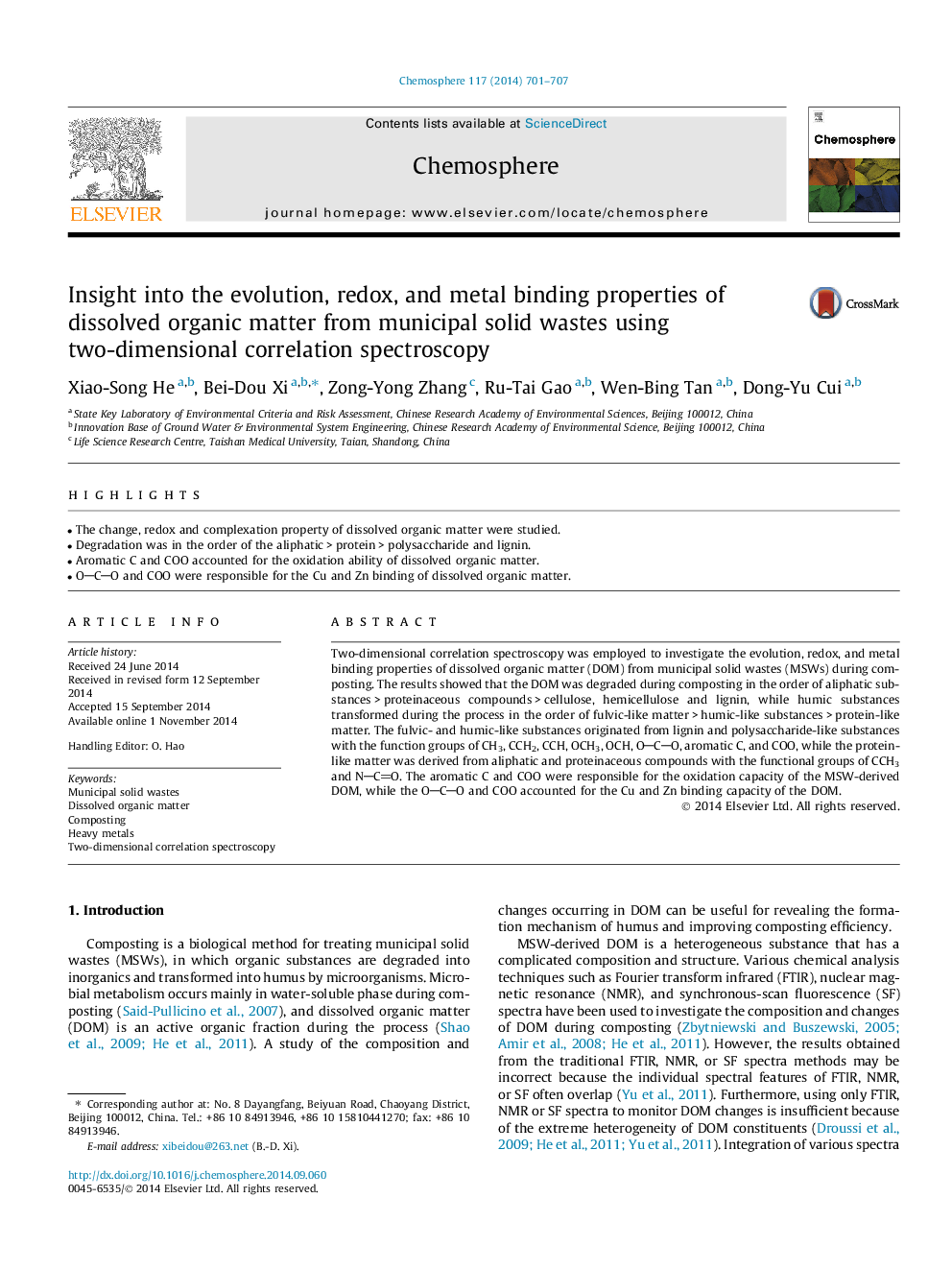| Article ID | Journal | Published Year | Pages | File Type |
|---|---|---|---|---|
| 6308545 | Chemosphere | 2014 | 7 Pages |
Abstract
Two-dimensional correlation spectroscopy was employed to investigate the evolution, redox, and metal binding properties of dissolved organic matter (DOM) from municipal solid wastes (MSWs) during composting. The results showed that the DOM was degraded during composting in the order of aliphatic substances > proteinaceous compounds > cellulose, hemicellulose and lignin, while humic substances transformed during the process in the order of fulvic-like matter > humic-like substances > protein-like matter. The fulvic- and humic-like substances originated from lignin and polysaccharide-like substances with the function groups of CH3, CCH2, CCH, OCH3, OCH, OCO, aromatic C, and COO, while the protein-like matter was derived from aliphatic and proteinaceous compounds with the functional groups of CCH3 and NCO. The aromatic C and COO were responsible for the oxidation capacity of the MSW-derived DOM, while the OCO and COO accounted for the Cu and Zn binding capacity of the DOM.
Keywords
Related Topics
Life Sciences
Environmental Science
Environmental Chemistry
Authors
Xiao-Song He, Bei-Dou Xi, Zong-Yong Zhang, Ru-Tai Gao, Wen-Bing Tan, Dong-Yu Cui,
